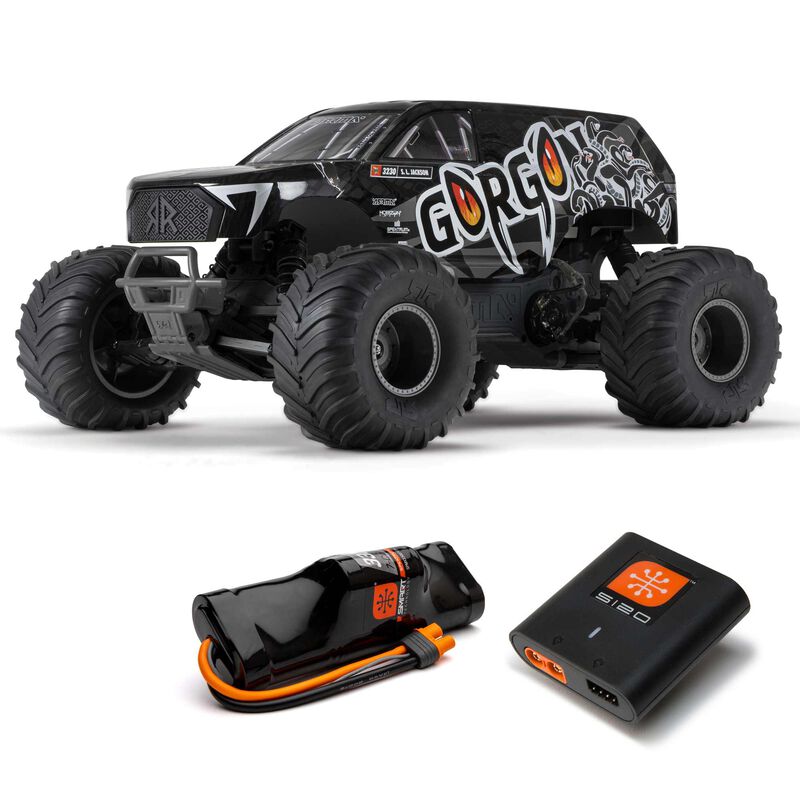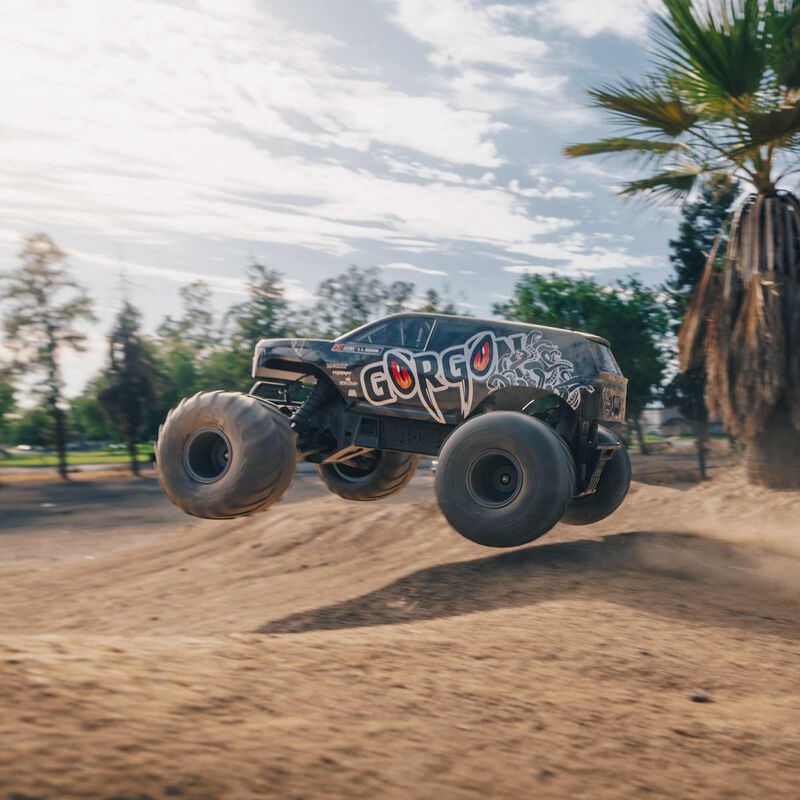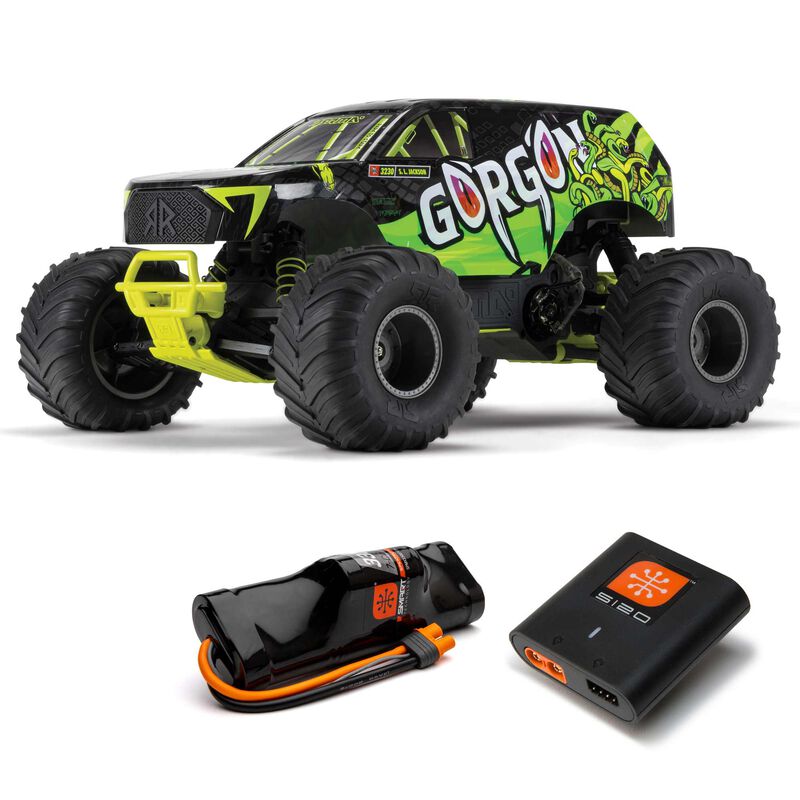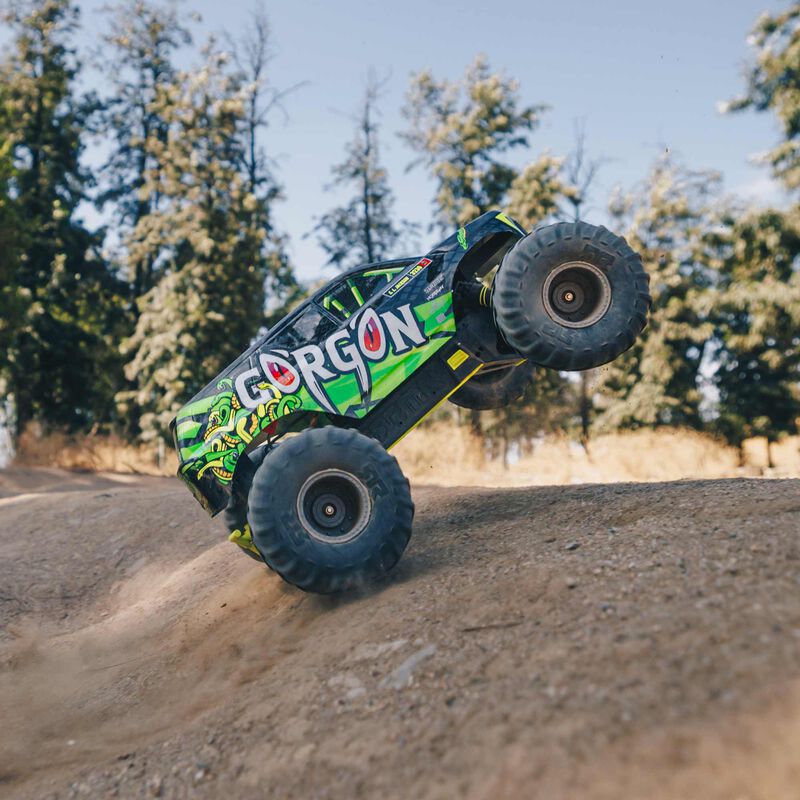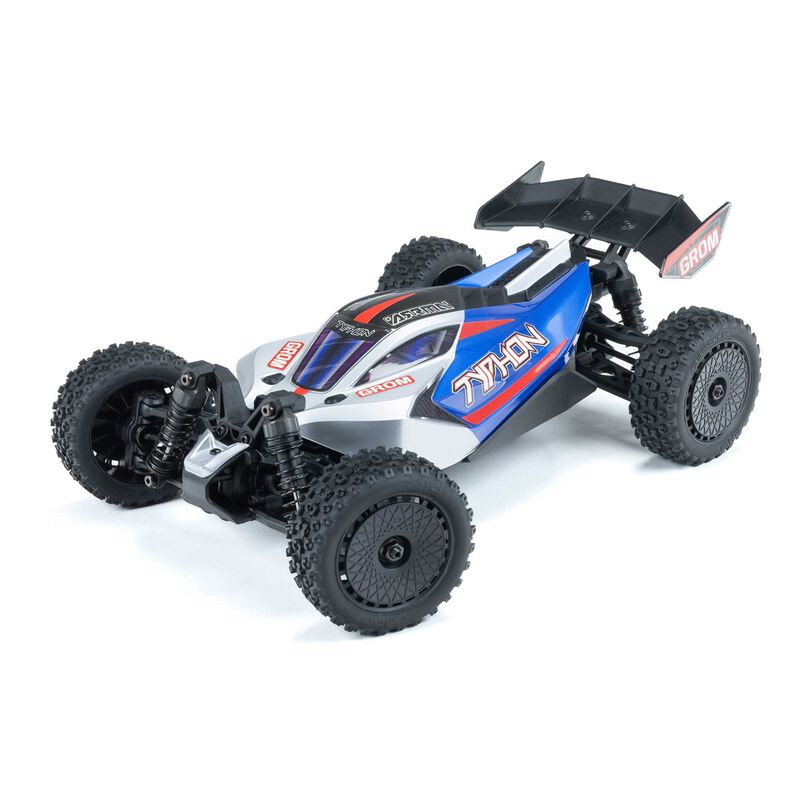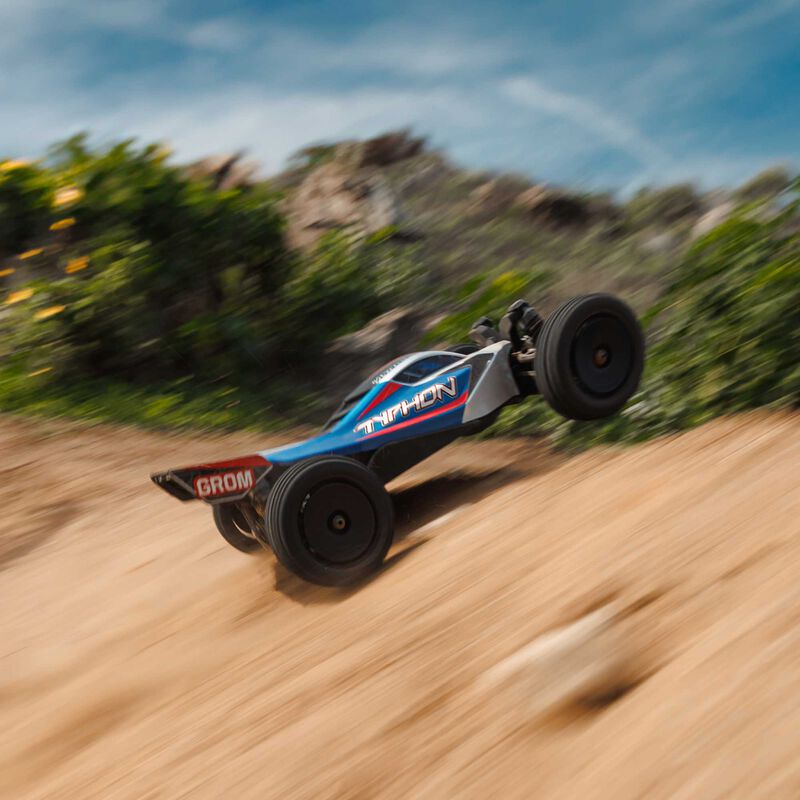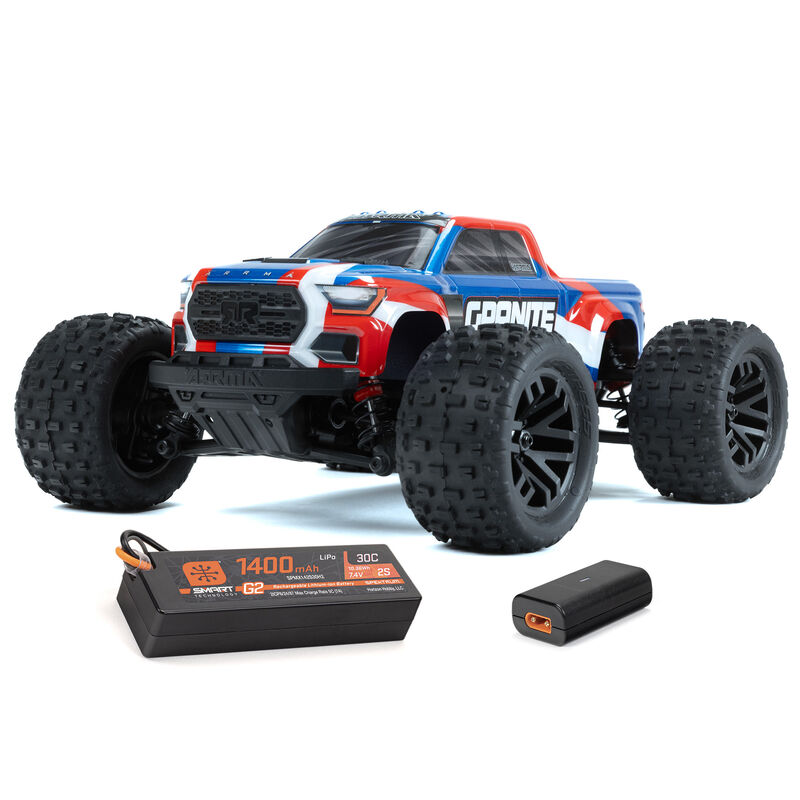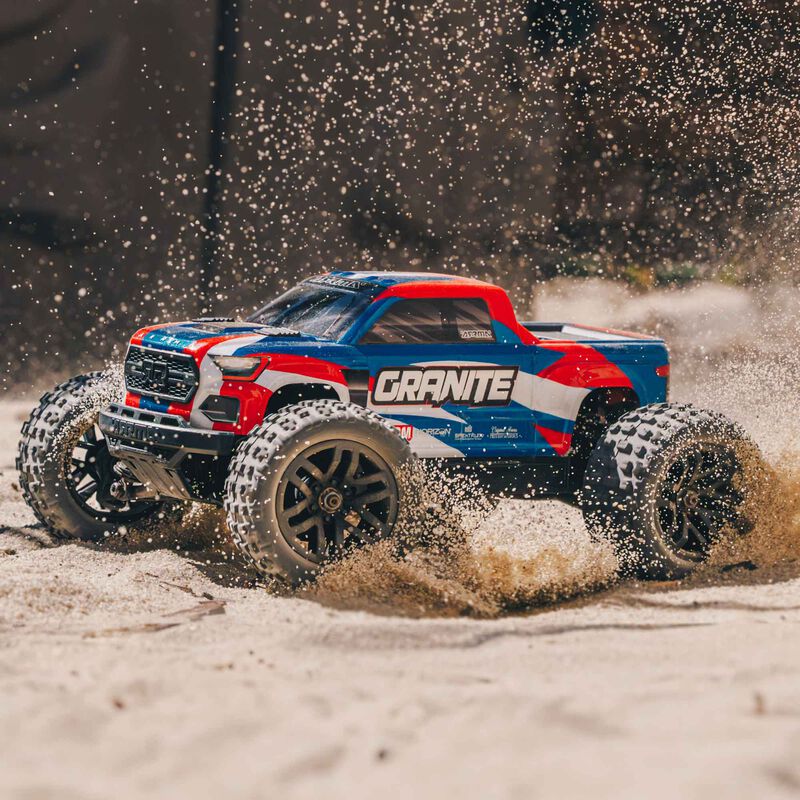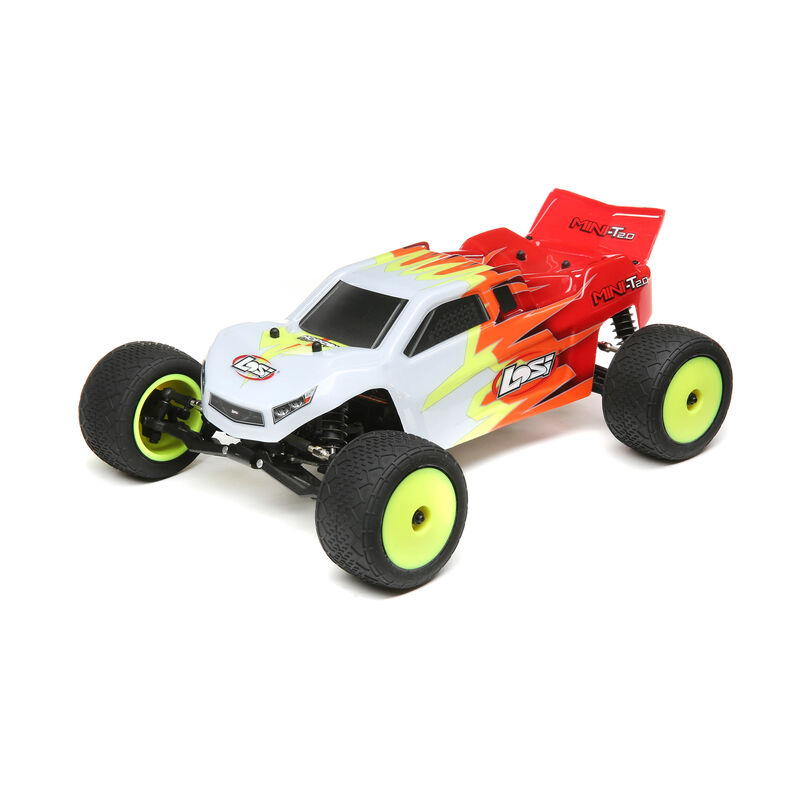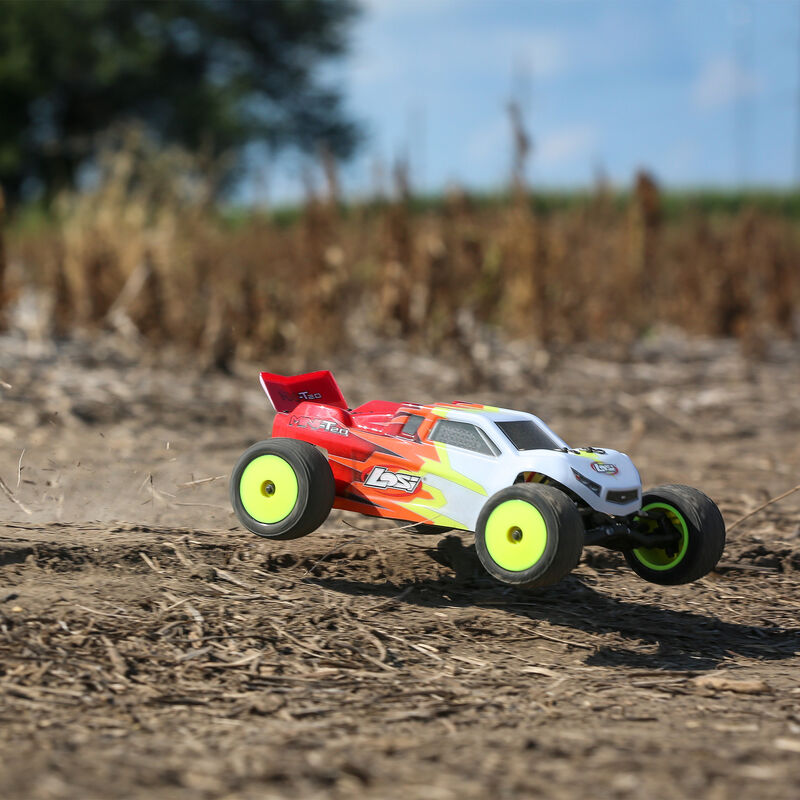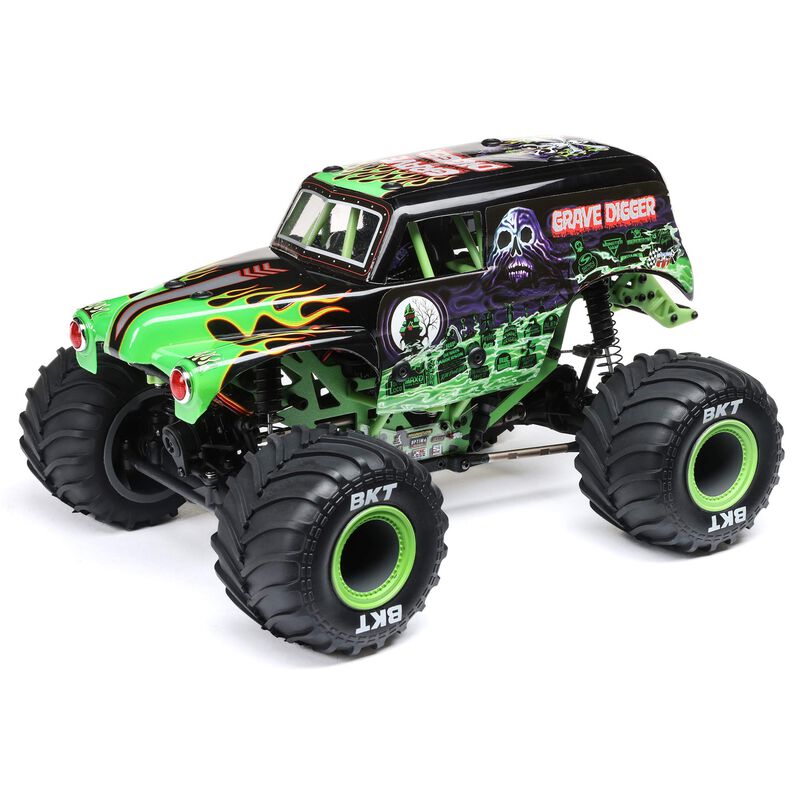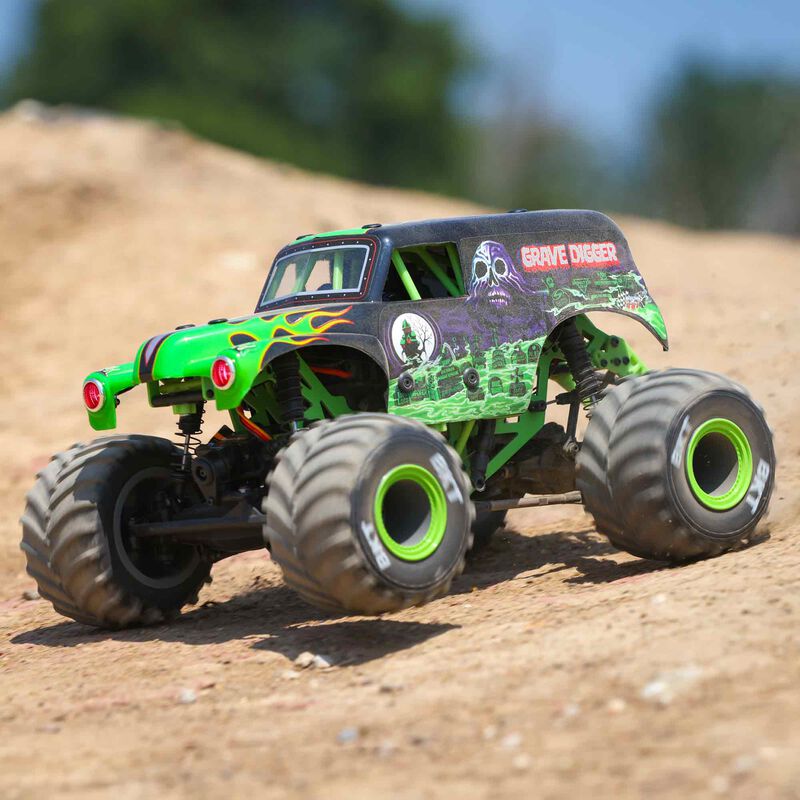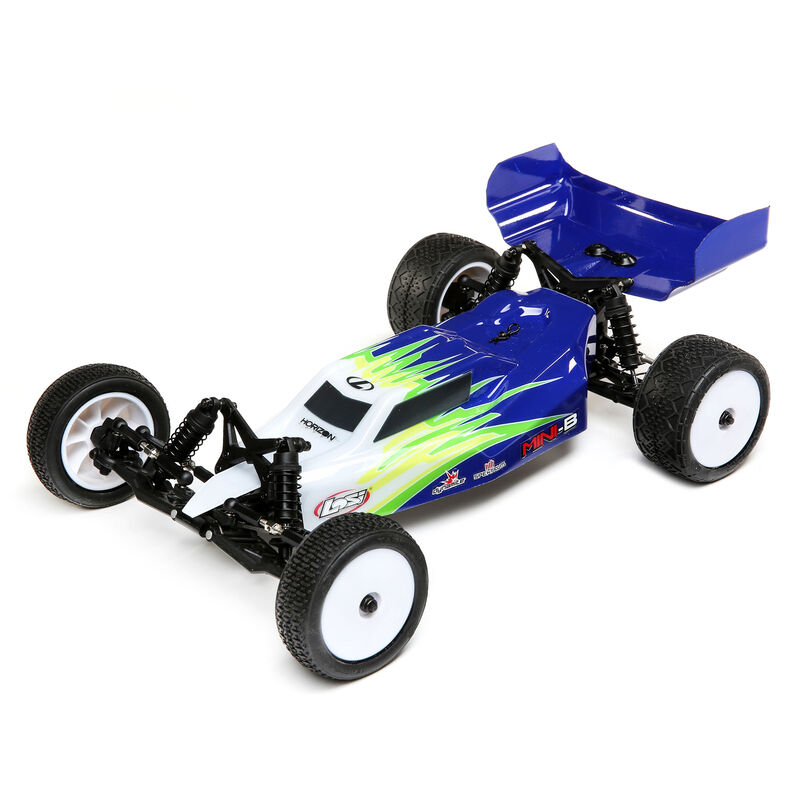Posted: 4/10/21
If you’ve watched remote control (RC) cars whizzing around a track or climbing a trail, you may be curious to try them. But RC vehicles can be overwhelming for newbies, with multiple categories, types, scales, and power options to choose from. We’re here to make your introduction to the hobby easier. Here’s a helpful beginner guide with the answers to many frequently asked questions.
Why Get Started With RC?
Here are just a few reasons to explore the RC hobby.
- You’ll join a community
Whether you’re at an in-person race club or on an online message board, RC enthusiasts are usually happy to share their knowledge. The hobby can be overwhelming at times, especially in the beginning. But someone will likely be there to help when you need it.
- It’s a fun hobby to do with friends or family
Hobbies, in general, are amazing. It’s even more fantastic when you can share them with those close to you. With proper selection of gear and supervision, RC cars are fun for any age group. Once you get familiar with them, you can find plenty of ways to enjoy the hobby. For example, you may want to teach other people how to drive, learn to build and paint them, race other people, visit RC tracks and crawler courses, or take off-road cars to beaches or hiking trails.
- It relieves stress
Studies link leisure-time hobbies with improved health and wellbeing. It’s important to practice self-care and set aside time for yourself. What better way to relax than to grab an RC car, take it for a drive, and watch your stress melt away?
- You can learn
An RC hobby offers numerous opportunities for education and growth. For instance, when you tinker with an RC car or build an RC kit, you’ll learn about mechanics and electronics, which are helpful in many careers.
What Does Radio Control (RC) Mean?
Radio control uses radio transmitters to send radio waves to control a model vehicle at far distances with precision and minimal input lag. At one point, RC vehicles used AM and FM radio signals. But today almost all RC transmitters communicate on a 2.4 gHz broadcast signal (as most other modern wireless devices do). Multiple people at a time can run cars using this signal without any conflicts.
Which Categories of RC Cars are Available?
Confused about all the different RC cars out there? RC cars broadly fall into six categories.
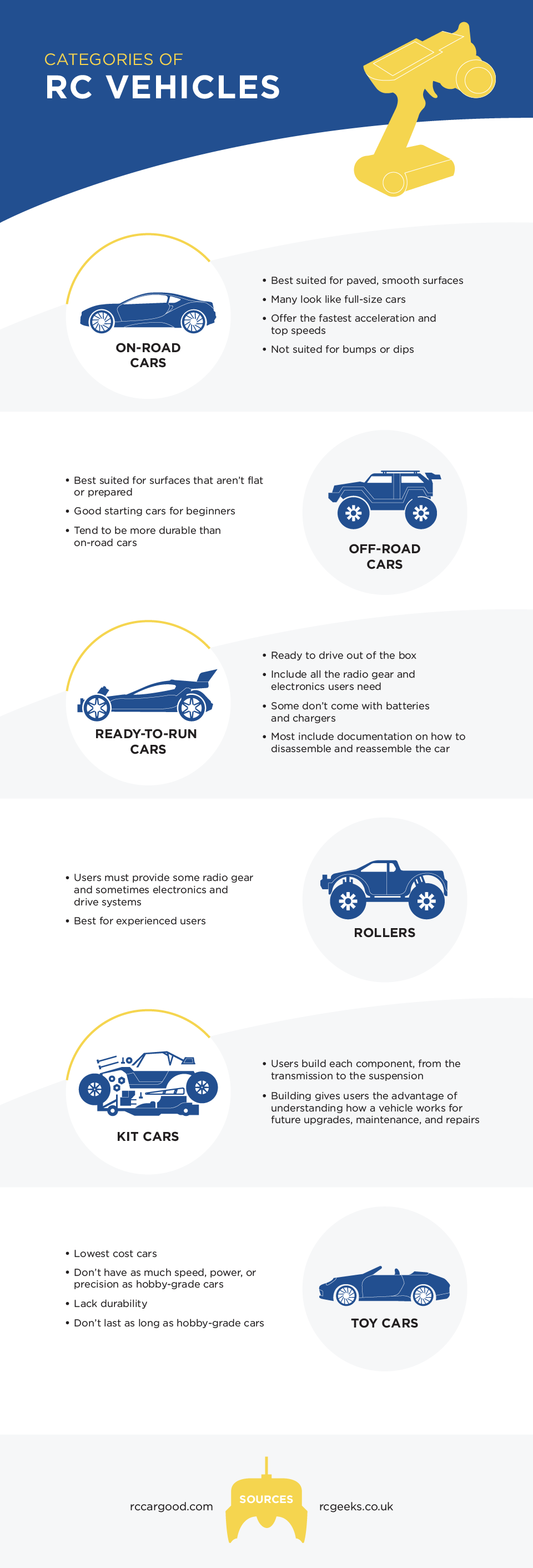
- On-Road Cars
On-road vehicles are best suited for paved, smooth surfaces. These cars often look like full-sized cars. In most cases, they offer the same speed and acceleration as other cars, but they’re easier to drive in a straight line due to their wider stance. Make sure you have plenty of room and flat conditions before pulling the trigger on one. (Empty parking lots work great.)
- Best suited for paved, smooth surfaces
- Many look like full-size cars
- Offer the fastest acceleration and top speeds
- Not suited for bumps or dips
- Off-Road Cars
As you may guess, rough-and-tough off-roaders are better suited for surfaces that aren’t flat or prepared. Off-road vehicles are more appealing to most enthusiasts because they offer greater flexibility. You don’t have to find the perfect spot. You can run off-roaders virtually anywhere. They can run on-road as well, so they’re extra versatile. Off-road vehicles are the perfect starting point for beginners because you can take them anywhere and have a blast. As a bonus, they tend to be more durable than on-road cars, allowing for more run time and less downtime.
- Best suited for surfaces that aren't flat or prepared
- Good starting cars for beginners
- Tend to be more durable than on-road cars
- Ready-to-run RC cars
Ready-to-run (RTR) RC cars come with all of the radio gear and electronics you need to get your vehicle running, including the transmitter gear, engine/motor, and additional electronics such as servos. RTR setups require batteries and chargers. Be sure to double-check whether they’re included with a car before you make a purchase. You won’t learn a vehicle inside and out as you would by building it, but most RTRs include documentation on how to disassemble and reassemble them, along with maintenance tips and techniques to keep an RC in tip-top shape.
- Ready to drive out of the box
- Include all the radio gear and electronics users need
- Some don't come with batteries and chargers
- Most include documentation on how to disassemble and reassemble the car
- Rollers
Rollers are very close to ready-to-run cars and usually only differ in that the user has to provide some radio gear and sometimes electronics and drive systems. These products are better suited for more experienced users who know which components they want in their RC. They work well for enthusiasts who have extra gear to reuse or prefer to buy parts separately.
- Users must provide some radio gear and sometimes electronics and drive systems
- Best for experienced users
- Kit Cars
Kits give you the greatest control over how your car looks and functions. No other option allows users to get their hands dirty and learn the nitty-gritty details of what makes RC cars run. You get to build each component, from the transmission to the suspension. You’ll need to know what electronics you need before you purchase. The ECX Amp MT is an exception to this rule as it includes everything you need to complete it, including batteries and chargers, making it a perfect option for beginners.
- Users build each component, from the transmission to the suspension
- Building gives the advantage of understanding how a vehicle works for future upgrades, maintenance, and repairs
- Toy Cars
Many people get their first experience with remote-controlled vehicles with toy cars, and they can spark a lifelong interest in surface-based RC vehicles. Toy cars offer the lowest cost of entry. And if you fall in love with driving a toy car, you can upgrade to a hobby-grade RC car for more versatility and durability.
- Lowest cost cars
- Dont't have as much speed, power or precision as hobby-grade cars
- Lack durability
- Don't last as long as hobby-grade cars
Sources
- www.rccargood.com
- Sources
- rcgeek.co.uk
Which Type of RC Car is Right for Me?
Once you know which categories of car you want, you can choose from many types of RC cars.

- Trucks/Monster Trucks
Monster trucks are the big, bad boys of the RC car world. They can go over anything, pop wheelies, and do ridiculous jumps. A monster truck will put a smile on anyone’s face, and it’s a great first type of RC car. It isn’t as fast as some other off-road vehicles, and it can’t handle curves like an on-road racer. But it more than makes up for those limitations in its sheer fun factor. Monster trucks can be two-wheel drive or four-wheel drive. They have the highest ground clearance of most vehicles. And they generally have quick motors with gobs of torque. As a bonus, they look like the trucks you may have grown up watching on television.
- Highest ground clearance of Most RC vehicles
- Can be 2-wheel-drive or 4-wheel-drive
- Fun for beginners
- Buggies
Buggies are an off-road class of vehicles, but due to their low ground clearance and smaller tires, they’re better suited for a dirt track than someone’s backyard. While some of the larger 1/8 buggies can traverse grass reasonably, many of the 1/10 scales get hung up on such terrain. (Keep reading for an explanation about scale.) As a positive, buggies handle much better than monster trucks on- or off-road. Generally, people use buggies for racing, but there are exceptions.
- Off-road vehicles
- Best suited for dirt tracks rather than backyards
- Generally used for racing
- Drift cars
Much like their real-life counterparts, RC drift cars let the driver slide around turns rather than looking for grip and high-speed handling. Unlike full-scale drift cars, many RC drifters are four-wheel drive and have hard plastic tires to induce more skids. Rear-wheel-drive drifting has surged in popularity for the past few years, but it requires extra electronics and is better suited for experienced drifters. Due to their low speeds, drift cars break infrequently and are fun to drive in small spaces such as garages.
- On-road vehicles
- Modified so they slide around curves
- Most are 4-wheel-drive with hard, plastic tires
- Not as fast as other on-road vehicles
- Suitable for compact spaces, such as garages
- Truggies
Truggies are best described as a mix between a buggy and a monster truck. They’re the best of both worlds, in that they drive like lowered monster trucks that handle corners better. Well suited for a track or backyard, truggies are almost always four-wheel drive. Because of their higher speeds, truggies take more practice to master than other types of RC cars.
- Often described as a mix between a buggy and a monster truck
- Handle corners better than monster trucks
- Suitable for dirt tracks or backyards
- Usually 4-wheel-drive
- Rock Crawlers
Rock crawlers are capable of navigating seemingly impossible obstacles with ease. To traverse such terrains, they use high-torque motors, and therefore they lack top speed. They’re the most scale of any class of vehicle, and it’s fun to make your RC look just like the real thing. They offer a fresh take on the hobby and can be challenging. Plus, because of their slow speed, you can drive rock crawlers in small, tight areas.
- Off-road vehicles
- Rock Racers
A rock racer is like a rock crawler on steroids. Capable of bombing down trails and slowing down for rocky terrain, the rock racer is a blast to drive. Their rock crawling nature means rock racers feel best in rough, rocky terrain, such as a forest trail or sand dunes. Rock racers are great for beginners and they give you more chances to tinker than monster trucks.
What’s Scale?
Now that you understand the categories and types of vehicles, you may be wondering about scale. Scale basically means size in the RC world, and RC car scales operate in fractions. For example, a 1/10 scale vehicle is roughly 1/10 the scale of its full-size counterpart. Scales aren’t set in stone because RC cars aren’t always based on real-life vehicles. The most popular scale is 1/10, with 1/8 as a close second. Cars can get as small as 1/32 scale and below. Conversely, you can get large-scale vehicles at or above 1/5 scale.
